The farmer and the fisherman´s place
Bays of sand
Meløya is an island with a human history that spans over 10 000 years. This includes the stone age, viking age and the medieval times. The name of the island origins from the word "mjol", wich means fine sand, which characterizes the area around Lille Herstrand. The island has been a power sentre for centuries.
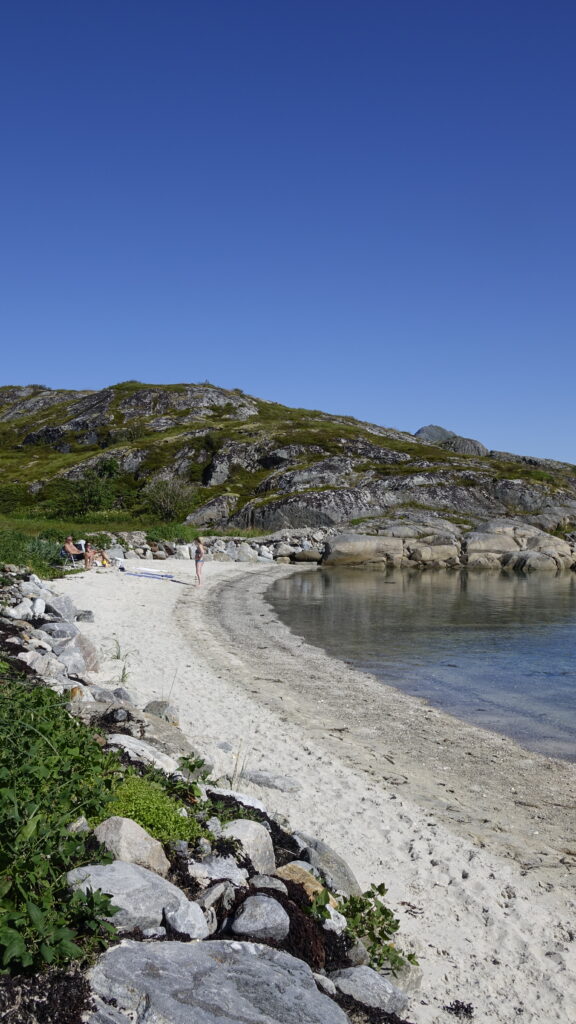
The view is as before
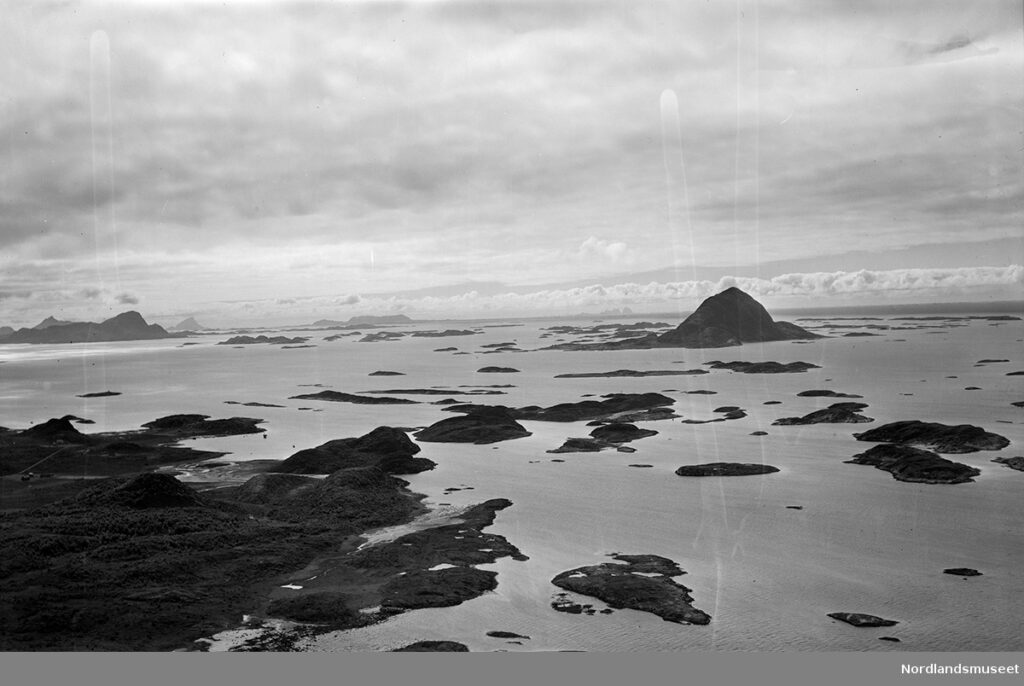
Archipelago kingdom
Lille Herstrand is a unique place where you have a short distance to the archipelago and the sea, but at the same time you are close to "civilisation". Meløya was once a major power center where the fishing boats going to and from Lofoten docked. One of the largest wooden churches in the country is therefore located on Meløya, as the census was at a time when there came a lot of traveling fishermen, and stopped by on their way to Lofoten. To fin out more about the history on Meløya you can find tourist-information on different locations on the island and online.
A hard life
The fisherman-farmer is not a person, it is a couple - a farmer in a suit and a fisherman in trousers. The roles in the couple were clear. The woman equipped the man for the seasonal fishing and helped with the home fishing. The man took an active part in the hardest work on earth and took care of the boat and house with menial work. The woman had the main responsibility for agriculture, at Lille Herstrand it was milking the cows, tending the sheep, picking berries, planting root crops and more.
A fisher-farmer household was based on exploiting the sea and the land. The household was responsible for harvesting, processing and consumption in the coastal community, and was also an exporter of fish products. Equality in the fisherman's life was a common understanding, as both their tasks were equally necessary for the household to function economically. Gradually, fishing became more technological and farming was at a standstill, this led to the fisherman's work gaining a higher value.
The farm was time consuming and even with a few cattle the work was hard.
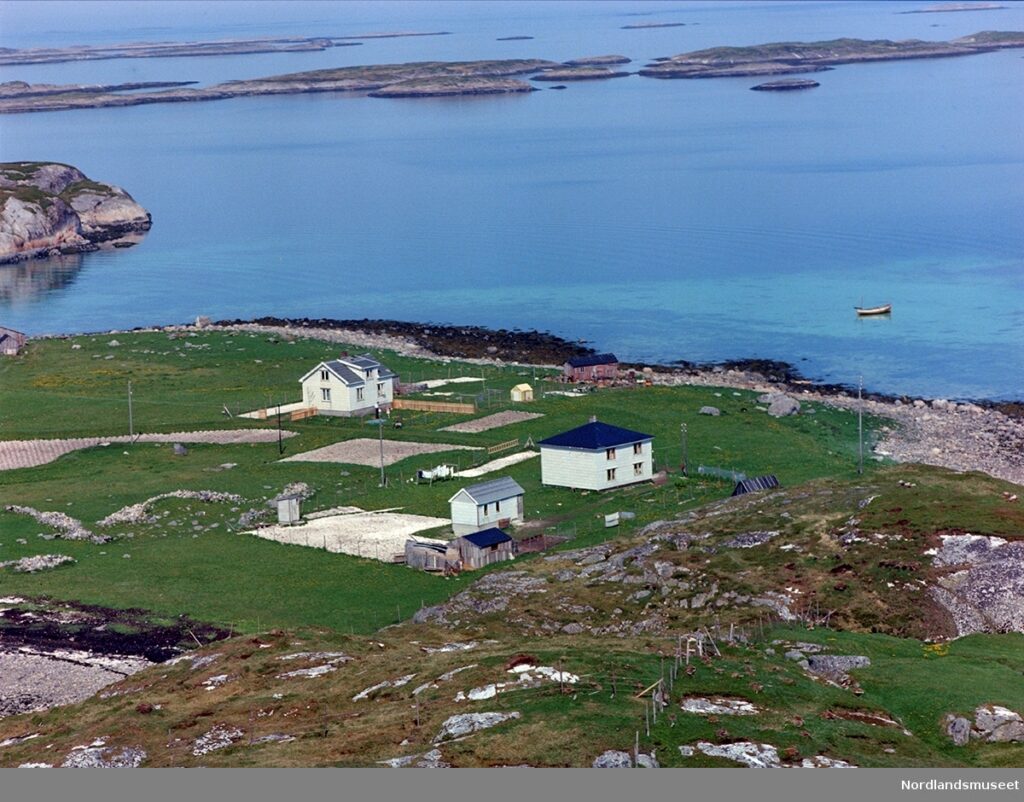
The end of the fisherman-farmers era came in the 19th century when the fisheries became too valuable and ahead of the agricultural business. On Lille Herstrand and as so many other places along the coast the farm was ended and the fisherman went out at sea for longer periods.

Cows, sheep and potatoes
In the outhouse, the farmer at Lille Herstrand had two cows and some sheep. From them they got some meat and milk. There was also an extra income at Lille Herstrand that the islanders outside came in to the beaches on Lille Herstrand and planted potatoes in the kelp which accumulated throughout the autumn and winter. When the kelp composted in the spring, this became a very nutritious place to plant potatoes.
Rekling
Rekling is a type of dried fish made from the fattest part of halibut. It is produced by cutting away the rind and fat around the eggs, and cutting the remaining part into thin strips which are then dried in the wind. To ensure that the air reaches the fish well, the strips can be pressed apart with pieces of wood. To get a good account, the weather cannot
At Lille Herstrand, a fishing house was built on top of the clipfish rock, behind the boathouse. Remaining pieces of the old building are visible. It was designed so that air could enter the rack, while at the same time keeping the rack protected from the elements.
Rekling production was a side business that the fish farmer at Lille Herstrand did to earn a little extra. Rekling is still produced on Meløya.
Clipfishrocks
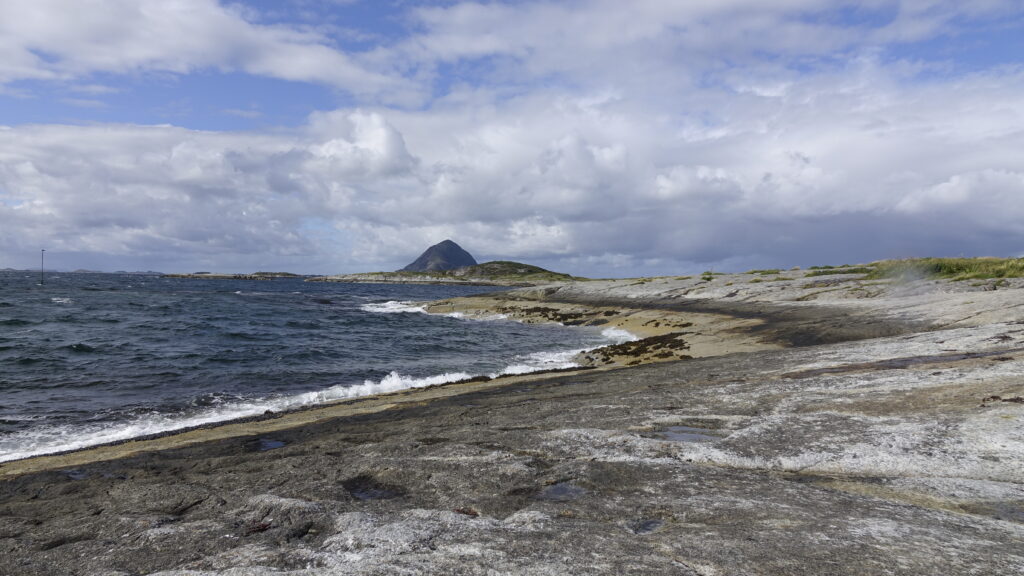
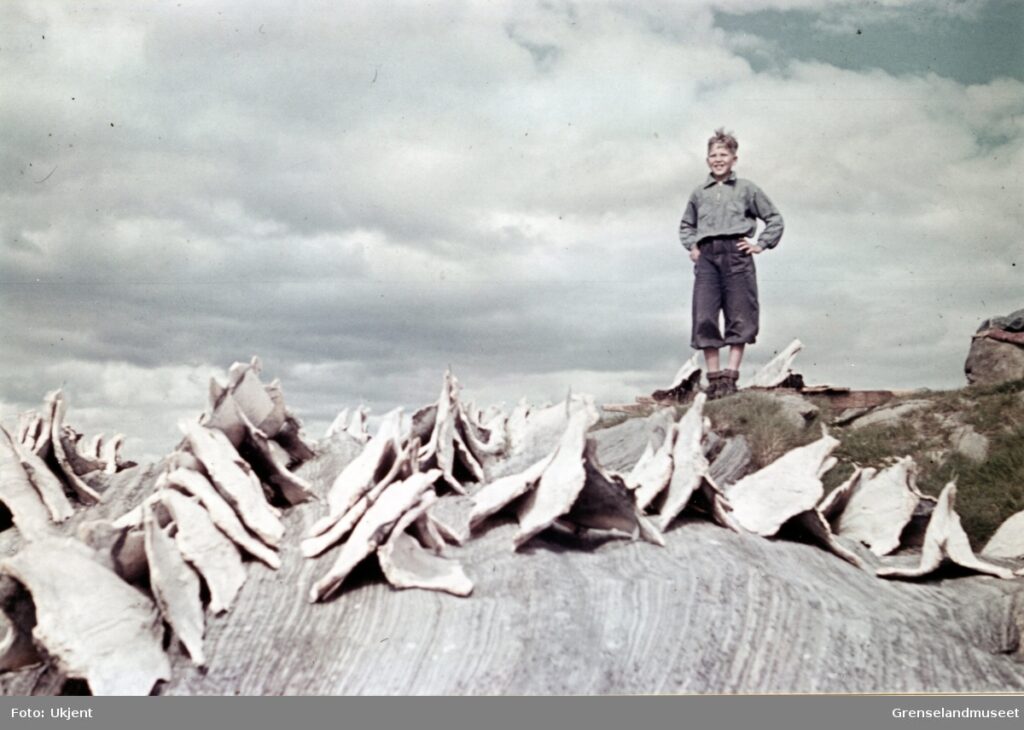
A vision
Lille Herstrand was not idyllic, unique or pretty when we took over. However, the area was beautiful and the location perfect. The potential was great and you could see a glimpse of something beautiful through the plastic, seaweed and stone. It would turn out that the road to the finish was not without tears, blood and toil.
2014
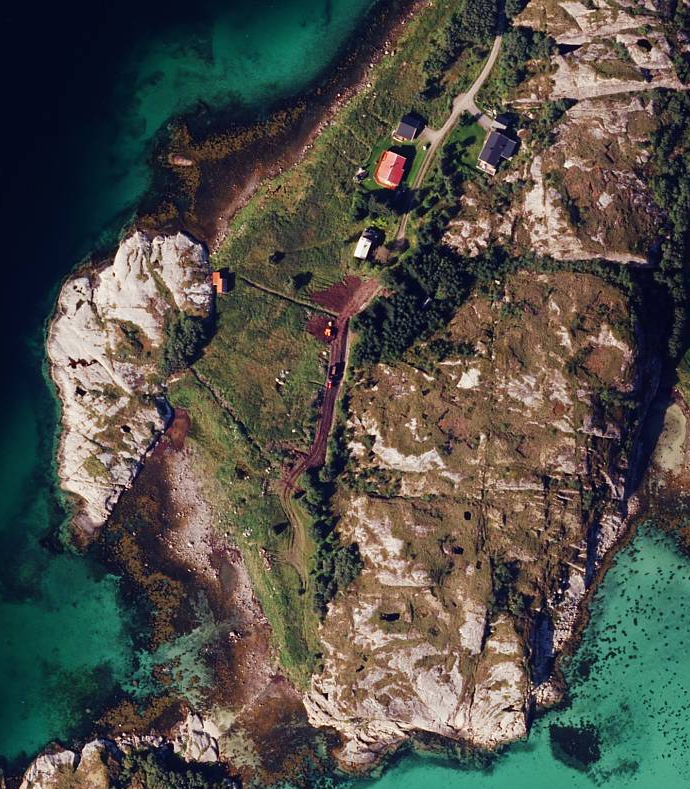
The field was destroyed by the sea. The winter storms brought plastic into the field. At high tide there was sea inside the boathouse
It was almost impossible to move around the property, let alone grow anything. The land had acted as a sieve for all the plastic that entered the archipelago. The high water took it into the field and the vegetation caused the plastic to remain.
We found plastic lying between half a meter and a meter into the ground, old sins from many a voyage. Cleaning this up was going to require hundreds of hours of work and a lot of effort from everyone in the family.
2020

It took many years to save the field so that it could be used again. It had to be protected from the hard weather which come from the southeast.
The field was in order again. Tonnes of plastic had to be removed from the shore and field. The boathouse was moved some meters higher and a new house was built.
Natural changes as wind and current made huge quantities of sand to be led on shore. Now we have a field that is not filled with seawater, and an absolutely incredible shoreline.
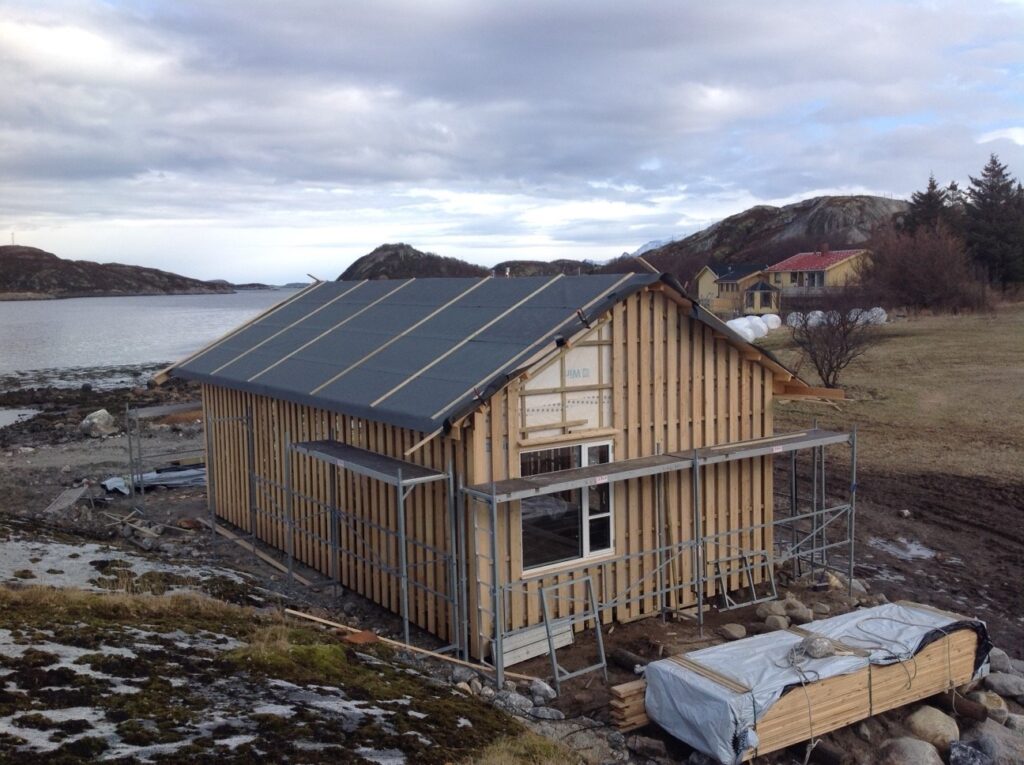
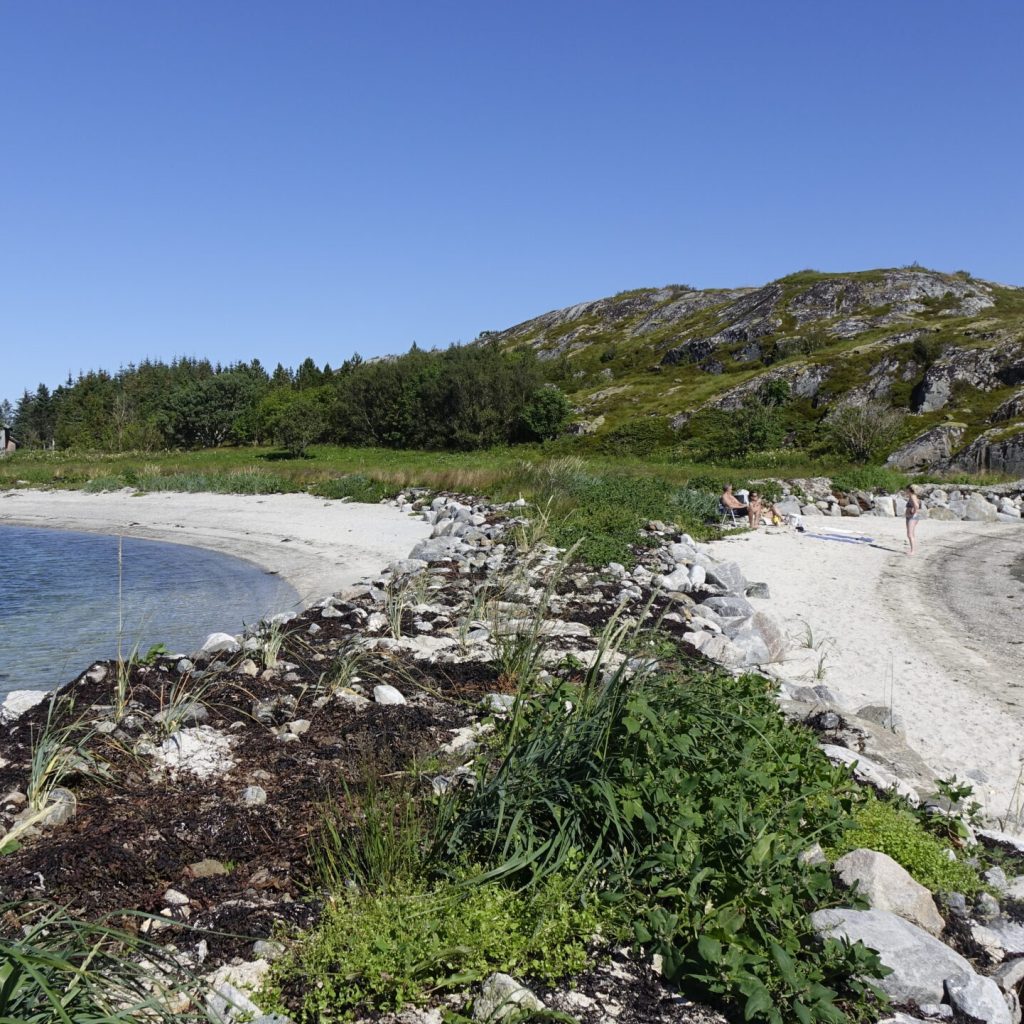
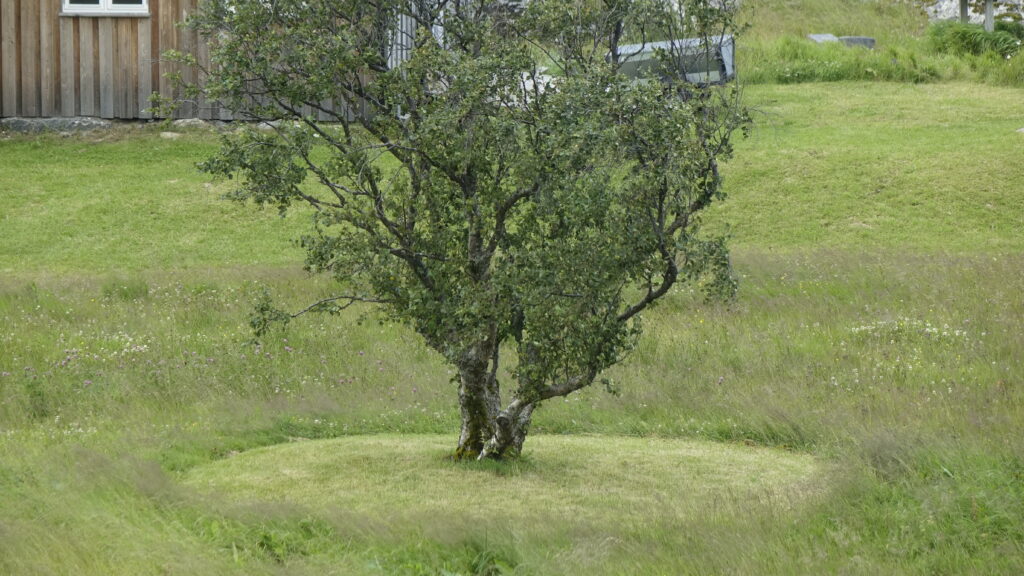
New boathouse
Boathouse with sauna facing south. There is also a stainless steel bench and water for guests who need it. A roe cat lives under the planks on the boathouse and the otter has the rock right on the outside as a stopover on its route along the coast.
The beaches
The sand was caught and naturally washed up along the shore. This has resulted in several beaches on which there is more and more sand every year. Stranden rakes for tare som blir kastet opp langs marken.
All the trees
The vast majority are still there, however not all are standing where they were before. When the old house was burned down by the fire crews who used it as a practice object, the large tree by the house was damaged by fire. However, it sprouts on the old branches
Experience Helgeland
The rich history, the unique nature, the freedom of the property and the weather that paints the view every day. Enjoy an exotic vacation with us!
Islets to explore
How to experience the archipelago?
Read about our boat. It suits to the ones who wish to explore the area and do activites as fishing, diving and islandhopping.
